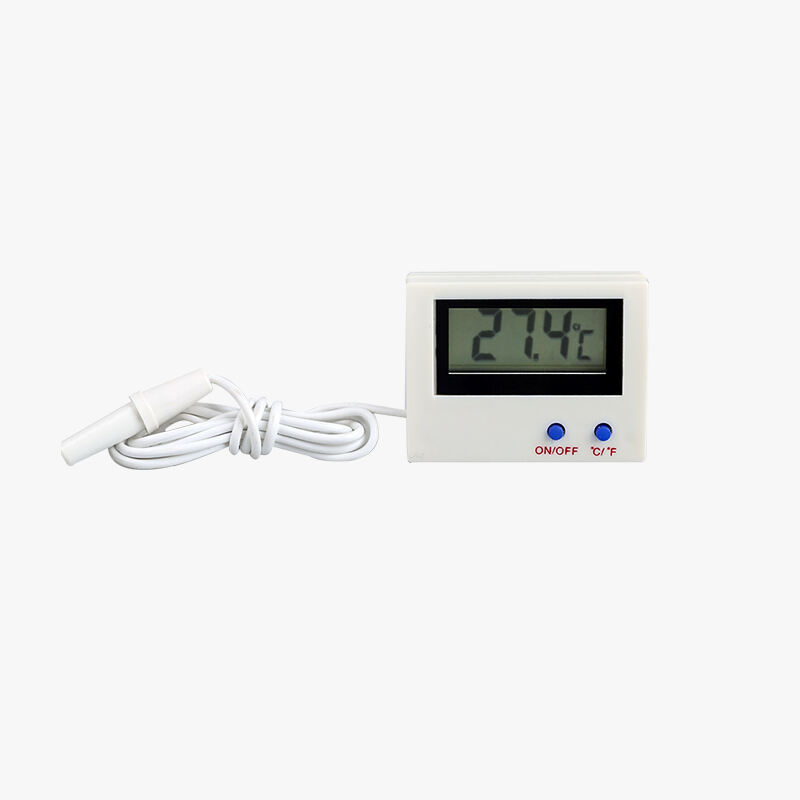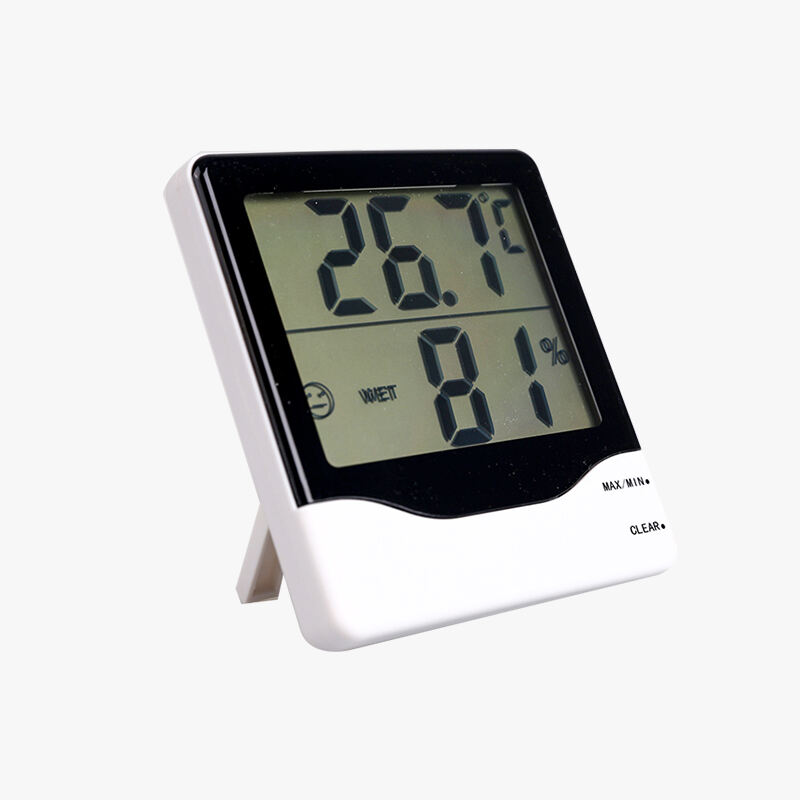Modern Temperature Monitoring Solutions for Professional Kitchens
The landscape of food safety compliance has evolved dramatically, with digital food thermometers becoming the cornerstone of temperature monitoring in professional kitchens. These precision instruments have transformed from simple probe devices into sophisticated tools that ensure both food safety and regulatory compliance. As we look ahead to 2025, the latest digital food thermometer technology offers unprecedented accuracy, connectivity, and ease of use that modern food service operations demand.
Professional kitchens worldwide are embracing these advanced monitoring solutions to maintain consistent food quality while meeting increasingly stringent safety standards. The right digital food thermometer can mean the difference between passing and failing crucial health inspections, making the selection process more critical than ever for food service professionals.

Essential Features of Professional-Grade Temperature Monitoring Devices
Advanced Sensor Technology and Accuracy Ratings
Modern digital food thermometer models incorporate state-of-the-art sensor technology that delivers readings accurate to within ±0.5°F. This precision is essential for ensuring food items reach and maintain safe temperatures throughout storage, preparation, and service. The best devices utilize thermocouple technology, offering rapid response times of under three seconds and the ability to measure temperatures across a wide range from -58°F to 572°F.
Professional-grade units also feature calibration capabilities, allowing kitchen staff to maintain accuracy over time. This self-calibration feature ensures consistent performance and compliance with food safety regulations, reducing the risk of temperature-related violations during health inspections.
Durability and Design Considerations
Commercial kitchen environments demand robust equipment that can withstand constant use, high temperatures, and occasional impacts. Leading digital food thermometer models feature water-resistant or fully waterproof construction, with IP67 ratings becoming the industry standard. Stainless steel probes and impact-resistant cases ensure longevity in demanding professional settings.
Ergonomic design elements, such as rotating displays and backlit screens, enhance usability during busy service periods. The most effective models balance durability with practical features like anti-microbial surface treatments and easy-clean materials that prevent bacterial growth and cross-contamination.
Smart Technology Integration and Connectivity
Wireless Data Collection and Analysis
The latest digital food thermometer technology incorporates Bluetooth and WiFi connectivity, enabling automatic data logging and real-time monitoring. This smart functionality allows kitchen managers to track temperature readings across multiple stations simultaneously, with instant alerts for any deviations from safe ranges.
Cloud-based storage systems integrate seamlessly with these connected devices, creating detailed temperature logs that satisfy HACCP documentation requirements. This digital record-keeping eliminates manual logging errors and provides comprehensive audit trails for food safety compliance.
Mobile Application Features
Companion mobile apps have become essential tools for modern digital food thermometer systems. These applications offer intuitive interfaces for monitoring multiple temperature points, setting customized alerts, and generating detailed reports. Staff can access temperature data remotely, enabling proactive temperature management even when away from the kitchen.
Advanced features include recipe temperature guides, cooking time calculators, and automated HACCP checklist generation. These smart tools streamline staff training and ensure consistent food safety practices across all shifts and locations.
Compliance and Certification Standards
Regulatory Requirements and Industry Standards
Professional digital food thermometer models must meet specific certification requirements to be considered compliant with food safety regulations. NSF certification remains the gold standard, indicating that the device meets strict criteria for accuracy, reliability, and sanitation. Additionally, many jurisdictions require NIST traceability for temperature monitoring equipment used in commercial food service.
Understanding these standards is crucial when selecting a digital food thermometer for professional use. Compliance requirements vary by region and type of food service operation, making it essential to choose equipment that meets or exceeds local regulatory standards.
Documentation and Record-Keeping Capabilities
Modern digital food thermometer systems facilitate comprehensive record-keeping through automated data collection and storage. The best models offer customizable documentation features that align with specific compliance requirements, including time and temperature logs, cleaning records, and calibration histories.
These digital records provide invaluable protection during health inspections and audits, demonstrating consistent adherence to food safety protocols. Advanced systems can generate custom reports formatted to meet specific regulatory requirements, streamlining the compliance process.
Cost Considerations and Return on Investment
Initial Investment Analysis
While professional-grade digital food thermometer systems represent a significant initial investment, their long-term value extends beyond basic temperature monitoring. High-quality devices typically range from $100 to $500, with advanced wireless systems commanding premium prices. However, this investment must be weighed against the potential costs of food safety violations, product waste, and reputation damage.
When evaluating costs, consider factors such as warranty coverage, expected lifespan, and included features. Premium models often justify their higher price through superior accuracy, durability, and advanced functionality that supports efficient kitchen operations.
Long-term Value and Operational Benefits
The true value of a digital food thermometer system becomes apparent through improved operational efficiency and reduced risk. Advanced monitoring capabilities help prevent food waste by ensuring proper storage temperatures, while automated documentation saves staff time and reduces human error.
Additionally, comprehensive temperature monitoring systems can lower insurance premiums and minimize the risk of costly food safety incidents. The ability to demonstrate consistent compliance through detailed digital records provides valuable protection against liability claims.
Frequently Asked Questions
How often should digital food thermometers be calibrated?
Professional digital food thermometers should be calibrated at least once per week, or more frequently if specified by local health regulations. Many modern devices include self-calibration features and will alert users when calibration is needed. Always document calibration procedures as part of your food safety compliance records.
What features should I prioritize when choosing a digital food thermometer?
Focus on accuracy ratings, response time, and durability as primary considerations. For professional kitchens, look for models with at least ±0.5°F accuracy, response times under 4 seconds, and waterproof construction. Additional features like wireless connectivity and automated documentation can provide significant operational benefits.
Can digital food thermometers be safely sanitized between uses?
Yes, quality digital food thermometers are designed for safe sanitization between uses. Look for models with IP67 water resistance ratings and stainless steel probes. Clean the probe with alcohol wipes or approved sanitizing solutions, following manufacturer guidelines to maintain accuracy and prevent cross-contamination.

